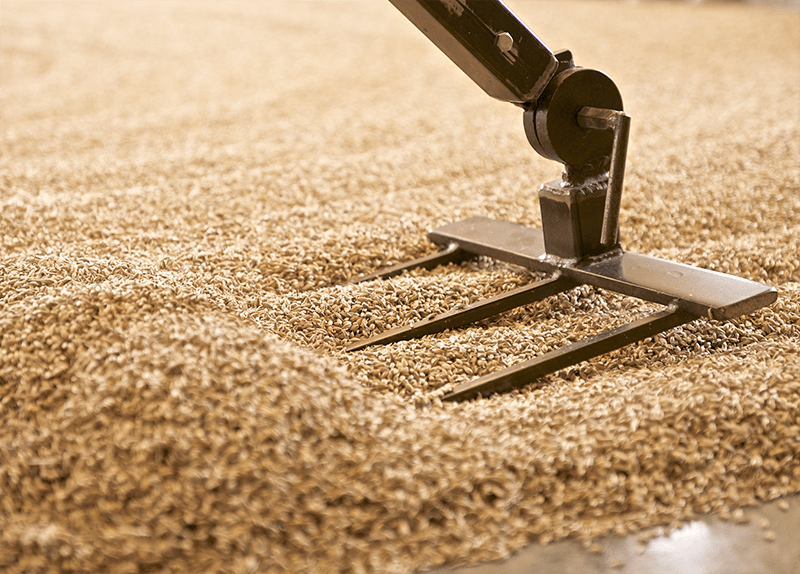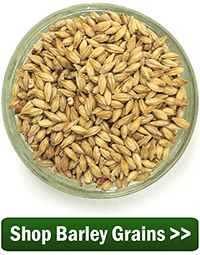 Base malt is the term we use to refer to the majority of the malted grains used to make beer. Base malt typically forms between 70% and 100% of the malt used in a given homebrew recipe. Base malts are certainly used by all-grain brewers, but also by partial mash and extract brewers who may want to add some diastatic power to their mash or additional grain flavor to their beer. One or more types of base malt may be used in a beer, often complemented by a range of specialty malts for additional flavor, body, and other characteristics.
Base malt is the term we use to refer to the majority of the malted grains used to make beer. Base malt typically forms between 70% and 100% of the malt used in a given homebrew recipe. Base malts are certainly used by all-grain brewers, but also by partial mash and extract brewers who may want to add some diastatic power to their mash or additional grain flavor to their beer. One or more types of base malt may be used in a beer, often complemented by a range of specialty malts for additional flavor, body, and other characteristics.
All base malts are typically:
- Made from barley. (Though beers can be made from 100% malted wheat or rye, these are generally considered adjunct grains.)
- Light in color.
- Kilned at a low enough temperature to maintain the diastatic power of the malt.
Below is a base malt guide with descriptions and comparisons. It’s a list of the most popular base malts used in home brewing. Also provided is a brief profile of each one:
- Two-row malt – Two-row base malt is made from two-row barley, which typically features plump kernels and a high starch to protein ratio. Light in color at 1.8˚L.

- Pilsner malt – This base malt is the lightest colored malt available (1˚ Lovibond). It works well for very light lagers and ales. Its profile makes it a suitable base malt for brewing just about any style of beer, but it is a must when making a pilsner lager.
- Pale or mild ale malt – As a comparison, pale malt is kilned at a slightly higher temperature than pilsner malt, giving it a slightly darker color (2.5˚L) and a maltier flavor. It’s a good option for just about any ale recipe, especially pale ale, IPA, brown ale, porter, and stout.
- Vienna malt – Vienna malt is another step above pale malt in terms of darkness (3.5˚L). It’s a great option for Vienna lagers, Oktoberfest, and other amber lagers.
- Munich malt – This base malt is the darkest malt that still has diastatic power. Its flavor profile is has rich, malty flavor reminiscent of bread crusts. As much as 100% Munich malt may be used in some types of German-style dark lagers, such as bocks and Munich dunkel. 10-20˚L.
 This is not a complete base malt list, but these are by far the most common ones with some descriptions and comparisons. As you can see each one has its own profile, including comparisons and contrast with each other. With these simple variations alone, you can begin creating a world of beers.
This is not a complete base malt list, but these are by far the most common ones with some descriptions and comparisons. As you can see each one has its own profile, including comparisons and contrast with each other. With these simple variations alone, you can begin creating a world of beers.
Want to learn more about the differences between the different base malts? Try this experiment: Brew five, one-gallon, single-malt beers using the same amount of malt, the same yeast, and the same hopping schedule. How are the beers different?
—–
David Ackley is a beer writer, brewer, and self-described “craft beer crusader.” He holds a General Certificate in Brewing from the Institute of Brewing and Distilling and is founder and editor of the Local Beer Blog.

Thanks, Ed, for another focused, keep-it-simple, readable article.